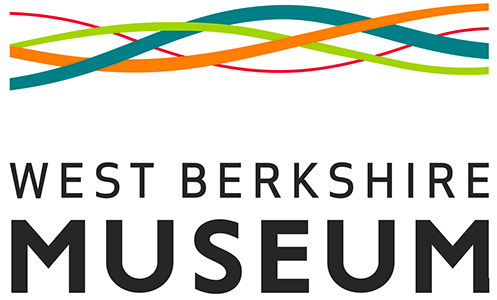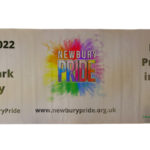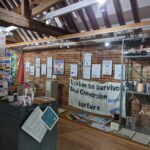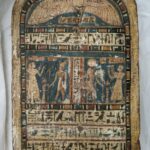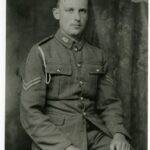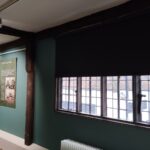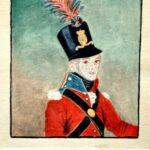West Berkshire Museum has many coins from the 17th Century known as ‘Newbury Farthings’. A large number came from the archives of the old Newbury Borough but several have been gifted by the people of the town. They are brass and look like ordinary “coins of the realm” but because they were not issued under Royal authority by the central Government are technically known as “tokens”.
Tokens were used in everyday commerce in the town with a value of a farthing, which was a quarter of an old penny:- ¼d. Newbury Farthings were produced and issued under the auspices of the Borough Corporation who administered many small charities and needed therefore to make small weekly payments to inhabitants of the town. There was a general shortage of small change in the period after the Civil War as local trade and commerce grew, and Parliament and the official Royal Mint couldn’t keep up with demand. Many towns and local tradespeople produced their own tokens and so long as their value was honoured it was considered a lawful thing to do, although Parliament tried several times, unsuccessfully, to suppress the practice. The fact is they met a need and could be considered as democratically being “by the people, for the people”.
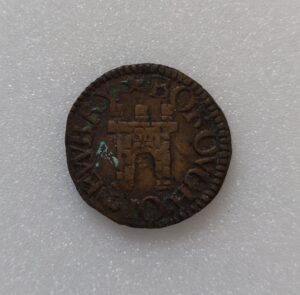
Token, 1657 Farthing, Newbury Corporation. Obverse.
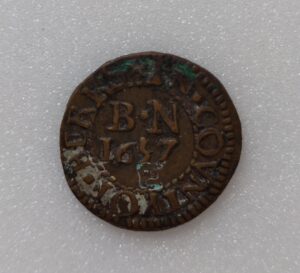
Token, 1657 Farthing, Newbury Corporation. Reverse.
The design of Newbury Farthings is: The Castle – as it appears on today’s Newbury Town Council arms – plus inscription “Borough of Newbury” on the obverse, and “In County of Berks 1657” on the reverse. The detailed design of the castle and spelling of the inscriptions varies a lot, indicating that several local smiths were used to strike the tokens, and the design may have evolved over time – although all are dated 1657. At that time an unskilled worker may have earned as little as 8d per day, but with some sort of skill or trade could earn up to 20p per day.
As well as the Borough, local traders in Newbury and wider West Berkshire issued tokens, and examples the Museum have, are: Roake, Draper & General Dealer; H Cumber, Baker; Joseph Sealey, Speenhamland; William Harrison, Grocers Arms; Richard Weston, Ilsley; Henry Knighton, Lambourn; Newbury Coffee House Company Ltd.; John Butler, Tallow Chandler’s Arms, Hungerford; John Spencer, Grocer, Newbury. Tokens would often stray far beyond their place of original issue; the Museum has examples from Basingstoke, Marlborough, Southampton, Norwich, Hull, Lancaster, Edinburgh, Cork, Barbados and Australia!

Trade Token, Ilsley farthing, 1669 for Richard Weston. Obverse.
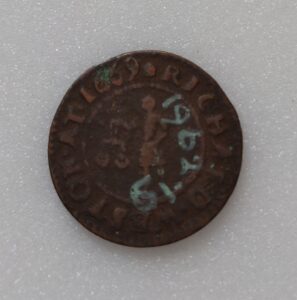
Trade Token, Ilsley farthing, 1669 for Richard Weston. Reverse.
The concept of tokens as substitutes for official money was not just a 17th Century phenomenon, they continued to appear in various guises for various purposes throughout the centuries right up to the present day. Many contractors and organisations issued tokens to their workers as wages or payment for piece work, which could be spent in company shops or exchanged later for real money. The museum has a number of tokens that were paid to workers who gathered and stripped willow from the reed beds at Woolhampton.
And who remembers, and has indeed used, the travel tokens issued by the present District Council to be used as payment for local bus, train, and taxi fares? The Museum has examples of these too! Tokens have now entered the digital age. You may have “value” recorded in your mobile phone which you use to pay for calls – and for parking in the District’s car parks! It beats putting coins in slots.
Article researched and written by David Richardson, Museum Volunteer
